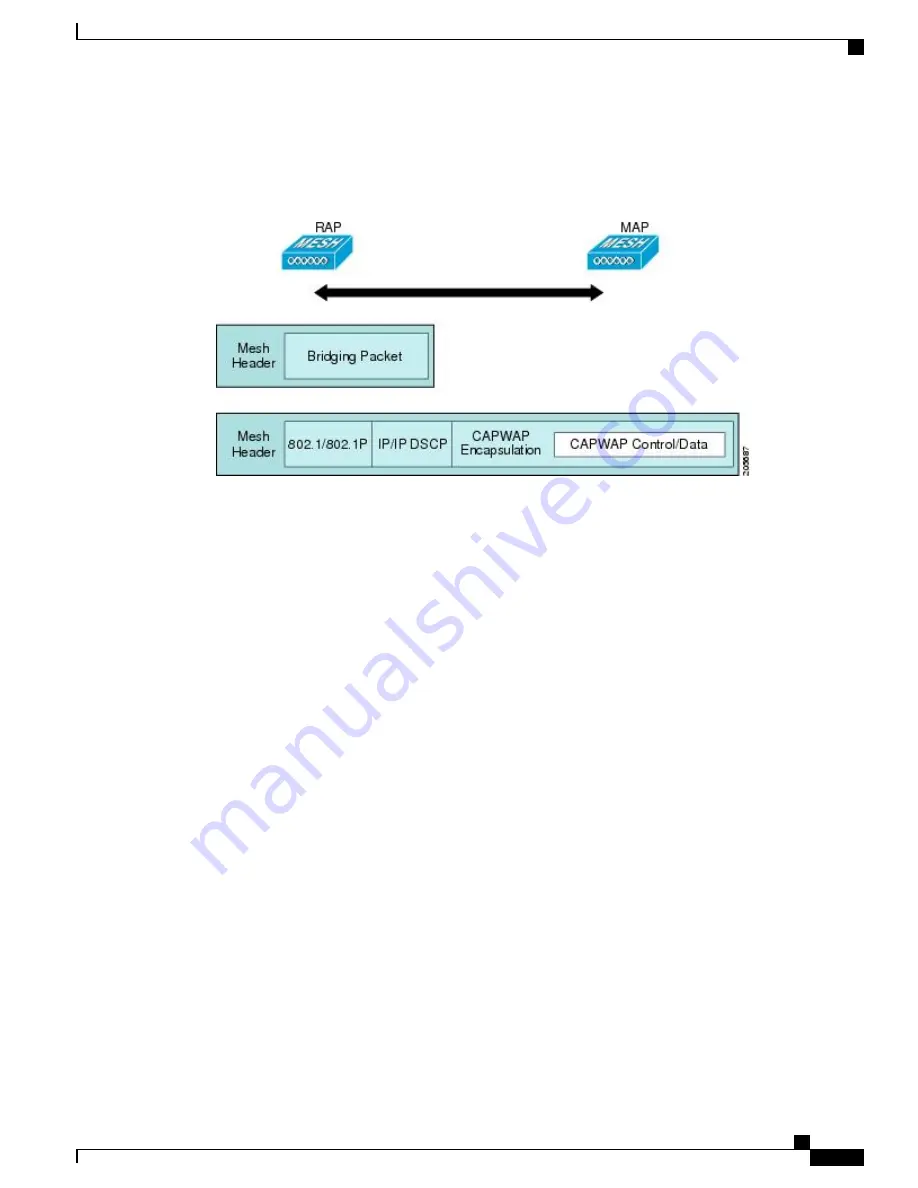
All backhaul frames are treated identically, regardless of whether they are MAP to MAP, RAP to MAP, or
MAP to RAP.
Figure 76: Encapsulating Mesh Traffic
Queuing on the Mesh Access Point
The mesh access point uses a high speed CPU to process ingress frames, Ethernet, and wireless on a first-come,
first-serve basis. These frames are queued for transmission to the appropriate output device, either Ethernet
or wireless. Egress frames can be destined for either the 802.11 client network, the 802.11 backhaul network,
or Ethernet.
AP1500s support four FIFOs for wireless client transmissions. These FIFOs correspond to the 802.11e
platinum, gold, silver, and bronze queues, and obey the 802.11e transmission rules for those queues. The
FIFOs have a user configurable queue depth.
The backhaul (frames destined for another outdoor mesh access point) uses four FIFOs, although user traffic
is limited to gold, silver, and bronze. The platinum queue is used exclusively for CAPWAP control traffic
and voice, and has been reworked from the standard 802.11e parameters for CWmin, CWmax, and so on, to
provide more robust transmission but higher latencies.
The 802.11e parameters for CWmin, CWmax, and so on, for the gold queue have been reworked to provide
lower latency at the expense of slightly higher error rate and aggressiveness. The purpose of these changes is
to provide a channel that is more conducive to video applications.
Frames that are destined for Ethernet are queued as FIFO, up to the maximum available transmit buffer pool
(256 frames). There is support for a Layer 3 IP Differentiated Services Code Point (DSCP), so marking of
the packets is there as well.
In the controller to RAP path for the data traffic, the outer DSCP value is set to the DSCP value of the incoming
IP frame. If the interface is in tagged mode, the controller sets the 802.1Q VLAN ID and derives the 802.1p
Cisco Mesh Access Points, Design and Deployment Guide, Release 7.3
OL-27593-01
173
Connecting the Cisco 1500 Series Mesh Access Points to the Network
Configuring Voice Parameters in Indoor Mesh Networks
















































